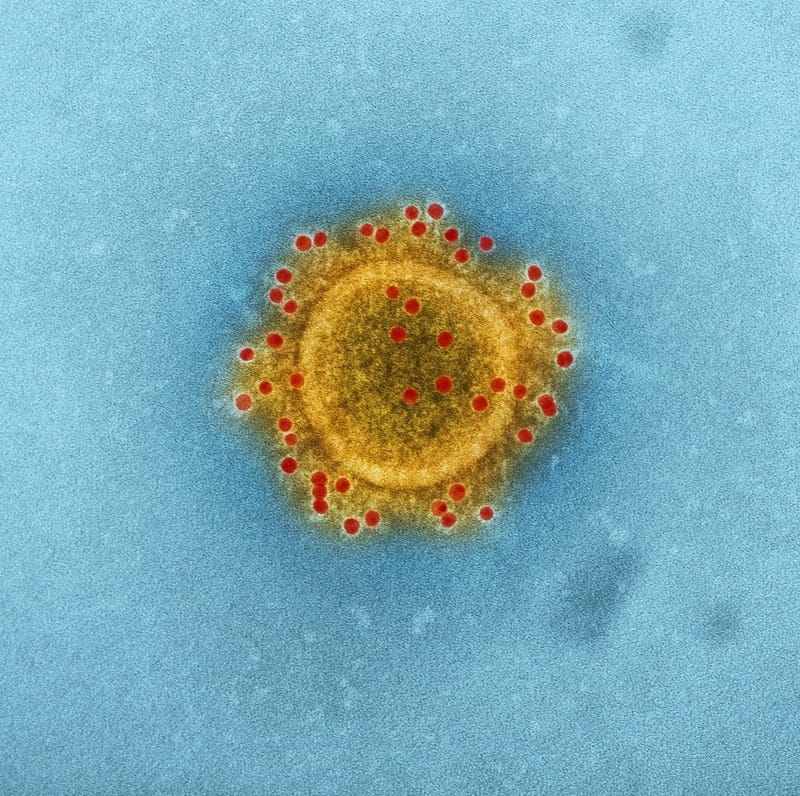Hepatitis C, a silent killer claiming approximately 300,000 lives annually, has long eluded scientists in their quest for an effective vaccine. However, a groundbreaking study from the University of Copenhagen has finally shed light on the virus's infection mechanism, potentially paving the way for a life-saving breakthrough[2].
Key takeaways:
• Danish researchers have revealed the structure of the hepatitis C virus protein complex
• This discovery could lead to the development of an effective vaccine
• The study is a collaborative effort between two institutes at the University of Copenhagen
Unmasking the hepatitis C virus
For years, scientists have struggled to understand how the hepatitis C virus (HCV) infects human cells. Unlike the coronavirus with its distinctive spike protein, HCV's infection mechanism has remained a mystery. Now, researchers at the University of Copenhagen have made a significant breakthrough by unveiling the structure of the protein complex HCV uses to attach itself to our cells[2].
"For the first time ever, we're showing what the protein complex on the surface of the hepatitis C virus looks like. The virus uses this protein complex to attach itself to the cells in our body," explains Associate Professor Jannick Prentø[2].
The challenge of studying HCV
The reason this discovery has eluded scientists for so long lies in the fragile nature of the HCV protein complex. Previous attempts to recreate these proteins in laboratory settings resulted in them falling apart before they could be studied[2].
Associate Professor Pontus Gourdon elaborates, "We managed to figure out exactly how they're put together, and based on that, we were able to recreate this protein complex outside the cell so we could study it closely"[2].
Implications for vaccine development
This newfound understanding of the HCV protein complex structure opens up exciting possibilities for vaccine development. With this knowledge, researchers can now design vaccine candidates that could potentially stop the virus from infecting human cells[2].
Postdoc Elias Augestad explains, "When we know what the protein complex looks like, we can design vaccine candidates that can stop the virus from infecting us"[2].
The hope is that this breakthrough will lead to the development of a vaccine that stimulates our immune system to produce antibodies that effectively bind to the surface of the hepatitis C virus, neutralizing it before it can cause harm.
A collaborative effort
The success of this study can be attributed to the collaborative efforts of two different institutes at the Faculty of Health and Medical Sciences at the University of Copenhagen. The project was initiated by Jannick Prentø from the Department of Immunology and Microbiology and Hvidovre Hospital, along with postdoc Elias Augestad[2].
Recognizing the need for specialized expertise in determining the structure of transmembrane proteins, Prentø sought out Pontus Gourdon from the Department of Biomedical Sciences, who leads the Molecular Cardiology and Membrane Proteins research group. Gourdon and his colleague Kaituo Wang brought their invaluable expertise to the project, making the breakthrough possible[2].
The global impact of hepatitis C
To truly appreciate the significance of this discovery, it's essential to understand the global impact of hepatitis C. Approximately 58 million people worldwide live with chronic hepatitis C infection, with the virus claiming around 300,000 lives each year[2].
Despite ongoing treatment efforts, the global prevalence of hepatitis C has not significantly decreased. This persistent challenge underscores the urgent need for an effective vaccine, making the Danish researchers' breakthrough all the more crucial.
Looking ahead: The future of HCV prevention
While this discovery marks a significant milestone in the fight against hepatitis C, it's important to note that the development of an effective vaccine is still a complex process that will require further research and clinical trials.
However, the unveiling of the HCV protein complex structure provides researchers with a crucial blueprint for vaccine development. This newfound knowledge could potentially lead to the creation of a vaccine that triggers our immune system to produce antibodies capable of effectively binding to the surface of the hepatitis C virus, rendering it harmless[2].
As we look to the future, this breakthrough offers hope for millions of people affected by hepatitis C worldwide. It also serves as a testament to the power of collaborative research and the importance of persistence in tackling complex scientific challenges.
In conclusion, the work of these Danish researchers brings us one step closer to potentially eradicating hepatitis C, a goal that seemed almost insurmountable just a few years ago. As we await further developments in this exciting field, it's clear that this discovery could mark a turning point in our battle against this deadly virus.
For those interested in staying updated on the latest developments in hepatitis C research and other longevity-related topics, we encourage you to subscribe to our newsletter and follow our blog for regular updates on groundbreaking scientific discoveries.
References:
- World Health Organization. (2023). Hepatitis C. https://www.who.int/news-room/fact-sheets/detail/hepatitis-c
- University of Copenhagen - Faculty of Health and Medical Sciences. (2024). Danish researchers reveal the secret behind deadly virus. https://via.ritzau.dk/pressemeddelelse/14027747/danske-forskere-afslorer-hemmeligheden-bag-dodelig-virus?publisherId=13560987&lang=da













Member discussion